Operated like Gestapo
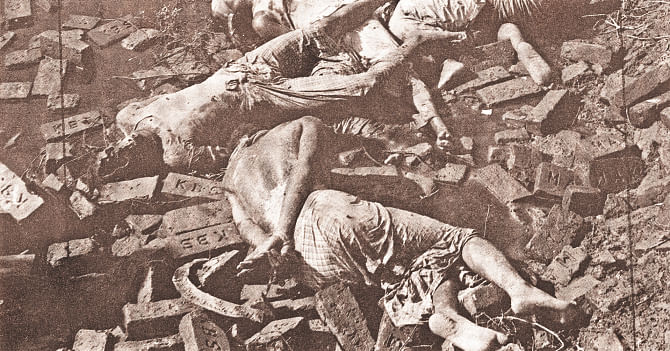
Few of them returned home. Many of their bodies could not even be traced. Most of the corpses that were found at different killing sites in Dhaka were mutilated beyond recognition.
They were among the brightest sons and daughters of the soil -- all pro-liberation people including professors, journalists, litterateurs and doctors.
They were massacred by the Al-Badr, the notorious killing squad comprised mostly of leaders and activists of Islami Chhatra Sangha, the student wing of Jamaat-e-Islami in 1971.
And the man who was at the helm of the militia was Motiur Rahman Nizami, found guilty of murdering intellectuals and sentenced top death by International Crimes Tribunal-1 yesterday. Last year, another to Al-Badr leader, Ali Ahsan Mohammad Mojaheed got death sentence over the same charge.
When the defeat of Pakistani occupation force and collaborator groups was imminent, the Al-Badr mounted “Gestapo-like attacks” to ensure that Bangladesh is devoid of professionals and intellectuals, said the charge against Nizami.
The Gestapo, Germany's secret police during the WWII, was infamous for its operations to hunt out those considered a threat to Nazi Germany, with the ability to rely on a network of informers and enjoying the power to arrest and imprison anyone without trial.
The agency was declared a criminal organisation by the Nuremberg Trial after the war.
Like Gestapo, Al-Badr traced houses of pro-liberation people, especially intellectuals of different professions, and dragged them out. Often blindfolded, the victims were then taken away only to be tortured and murdered with extreme brutality.
“Their bodies were dumped in mass graves and other places. Such attacks were largely carried out on or around 14th December 1971,” said the charge relating to the killing of intellectuals.
The court yesterday mentioned discovering of nine human skulls from the Al-Badar headquarters at Mohammadpur Physical Training Institute in Dhaka and 100/150 gouged human eyes behind the camp on December 17, 1971.
The findings are “envisaged to be vital and material which prove beyond reasonable doubt” that Al-Badr men exterminated many Liberation War supporters, including intellectuals of different professions, brutality at the training institute.
The martyred intellectuals include Alim Chaudhury and Azharul Huq, the doctors who had secretly treated wounded freedom fighters during the war.
Widows of Alim and Azharul narrated in their testimonies before the tribunal how their husbands had been picked up from their houses on Nizami's instruction.
Similar were the stories of other martyred intellectuals, including journalist Serajuddin Hossain, Syed Najmul Haque, ANM Golam Mostafa, Nizam Uddin Ahmed, Selina Parvin, Shahidullah Kaiser, Dhaka University professors Giasuddin Ahmed, Sirajul Haque Khan, Dr Abul Khayer, Dr Faizul Mohiuddin, Rashidul Hasan, Anwar Pasha, Santosh Chandra Bhattacharyya, Munier Chowdhury and Mofazzal Haidar Choudhury, physicians Mohammad Martuza and Fazle Rabbi, and many more.
Testifying before the tribunal, Shyamoli Nasrin Chaudhury, widow of Alim, said her husband was a Language Movement veteran.
After the crackdown on March 25, 1971, many freedom fighters took shelter at Alim's house. He had moved many leaders and freedom fighters to safe places during the nine-month war. Syed Nazrul Islam, who was the acting president of the Bangladesh government in exile, also took shelter at his Purana Paltan house, she said.
During the war, Alim used to visit some hospitals where he treated injured freedom fighters secretly, said an emotion-chocked Shyamoli in her testimony.
"Suddenly in the afternoon of December 15, we saw a microbus smeared with mud parked outside the house of Mannan [one of the perpetrators of Alim's abduction] house. We went inside. After around 35 minutes, we saw three armed Al-Badar members knocking on our doors," Shyamoli said.
When Alim asked why they came, they said, "You will learn once you come with us. We have got directive from our high command Motiur Rahman Nizami."
The Al-Badr men blindfolded and took him in the vehicle. His body was found beside another martyred intellectual Dr Fazle Rabbi at Rayerbazar killing field on December 18, 1971.
Azharul, a doctor of Dhaka Medical College Hospital, practised at Sayda Pharmacy at Hatirpool where he secretly provided treatment to freedom fighters.
On November 15, 1971, Azharul was getting ready at his house on Free School Street in Hatirpool to go to the hospital when the Pakistani soldiers and their local collaborators cordoned off nearby streets.
Azhar decided to go to the hospital on an ambulance but could not make it. They caught him in front of his house along with Humayun, also a doctor who lived next door. Azhar's wife Syeda Salma Mahmud asked them to identify themselves.
"We are here to take Azhar with us on the instructions of Al-Badr leader Motiur Rahman Nizami," said one of the Al-Badr members.
The following day, two physicians of Dhaka Medical College Hospital came to her house and said the bodies of Humayun and Azhar were at the hospital morgue. The bodies were found on a culvert near Notre Dame College.
The tribunal yesterday said it is proved beyond reasonable doubt that the accused was a top leader of Al-Badr Bahini who killed numerous intellectuals and professionals including Abdul Alim Chaudhury, Azharul Haque and Humayun Kabir at the fag end of the Liberation War.
"The accused was aware of the consequence of his act and conduct that substantially encouraged, endorsed, approved, provided moral support to the Al-Badr men in committing the killing of intellectuals and professionals."
After the verdict, Shyamoli, also an eminent educationist, told The Daily Star, "The judgment met our expectation. We are happy with the verdict."

 For all latest news, follow The Daily Star's Google News channel.
For all latest news, follow The Daily Star's Google News channel. 

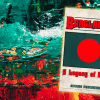
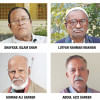
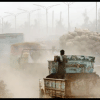
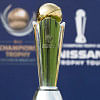



Comments